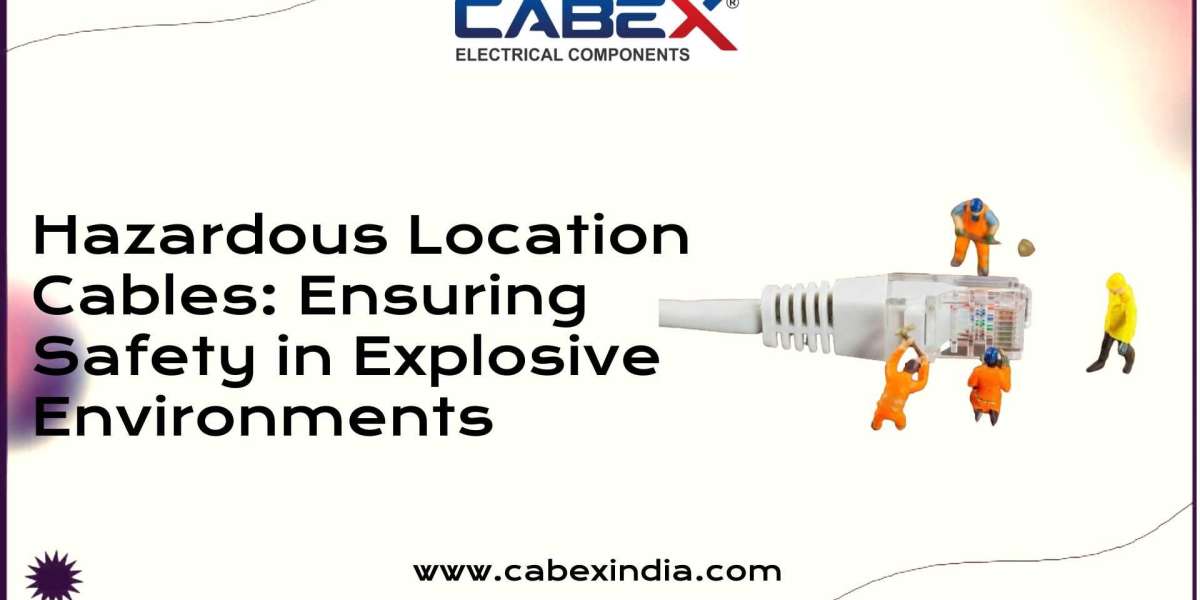Introduction
Hazardous Location Cables are specifically designed for use in environments where explosive gases, vapors, dust, or other hazardous materials may be present. These environments, classified as hazardous locations, require cables that can withstand extreme conditions while ensuring safe and reliable power transmission. Commonly used in industries like oil and gas, chemical processing, mining, and pharmaceuticals, hazardous location cables play a critical role in protecting both equipment and personnel by preventing sparks or electrical faults that could trigger explosions.
What Are Hazardous Location Cables?
Hazardous location cables, also known as explosion-proof or flameproof cables, are designed with specific materials and construction techniques to minimize the risk of ignition in environments where there is a constant or occasional presence of explosive atmospheres. These cables meet strict safety standards, such as ATEX, IECEx, and UL, to ensure they are suitable for use in Zones 0, 1, and 2 (gas environments) and Zones 20, 21, and 22 (dust environments).
Key Features of Hazardous Location Cables
- Flame and Fire Resistance
Hazardous location cables are made from fire-retardant materials that prevent the spread of flames in the event of a fire. This feature ensures that electrical systems remain operational during emergencies, reducing the risk of further hazards. - Chemical and Corrosion Resistance
These cables are designed to resist chemicals, oils, and corrosive substances commonly found in hazardous environments. This durability ensures long-term reliability in harsh industrial settings. - High Temperature Resistance
Hazardous location cables can operate safely in extreme temperature conditions, making them suitable for environments like refineries, chemical plants, and offshore platforms where heat is a major factor. - Low Smoke and Halogen-Free
In the event of a fire, hazardous location cables produce minimal smoke and contain no halogen compounds, reducing the release of toxic gases and improving the safety of personnel and equipment. - Mechanical Strength
These cables are built with enhanced mechanical strength, protecting them from abrasion, crushing, and mechanical stress. This is important in industrial settings where cables may be exposed to heavy machinery or rough handling. - Armoring
Many hazardous location cables come with an armored layer, providing additional protection against impact and ensuring the integrity of the cable even in physically demanding environments.
Applications of Hazardous Location Cables
- Oil Gas Industry
Hazardous location cables are essential for safe operations on offshore platforms, refineries, and drilling rigs, where explosive gases such as methane or propane are commonly present. - Chemical and Petrochemical Plants
These facilities often have high concentrations of volatile chemicals. Hazardous location cables prevent electrical sparks from coming into contact with these substances, reducing the risk of fires or explosions. - Mining Industry
In underground mining operations, hazardous location cables are crucial for preventing explosions in areas with methane or coal dust. These cables ensure the safe transmission of power and signals in dangerous environments. - Pharmaceutical and Food Processing
In industries where fine dust particles, such as flour or grain, are prevalent, hazardous location cables are used to avoid ignition, which could lead to dust explosions. - Marine and Offshore Environments
These cables are used extensively on ships, docks, and offshore oil platforms, where they ensure safe operation in environments exposed to saltwater, fuel vapors, and extreme weather conditions.
Safety Standards for Hazardous Location Cables
Hazardous location cables must meet various international safety standards to be used in explosive or high-risk environments. Some of the key standards include:
- ATEX (Atmosphères Explosibles)
A European Union directive that defines equipment and protective systems for use in explosive atmospheres. ATEX-certified cables are required for hazardous locations in Europe. - IECEx (International Electrotechnical Commission Explosive Atmospheres)
A global certification system that ensures equipment used in explosive atmospheres complies with international safety standards. - UL (Underwriters Laboratories)
In North America, UL-certified hazardous location cables meet stringent safety and performance requirements for use in explosive environments.
Conclusion
Hazardous location cables are crucial for maintaining safety and ensuring reliable power transmission in environments where explosive gases, dust, or chemicals may be present. With features like flame resistance, chemical durability, and high mechanical strength, these cables are designed to withstand the extreme conditions found in industries such as oil and gas, mining, and chemical processing. By meeting international safety standards and being built to handle hazardous environments, these cables help prevent accidents and ensure continuous, safe operations.







